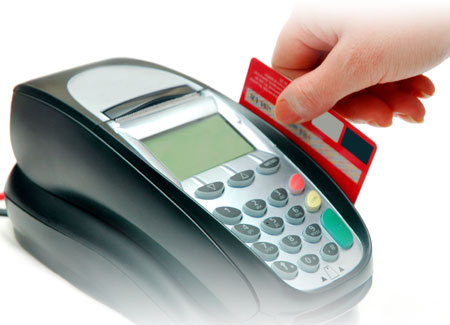 In another article we’ve covered our troubles with building a solution for a large international telemarketing merchant who needed independent merchant accounts for its several businesses. There were some questions about the validity of that merchant’s paperwork, which slowed down the process a bit, but we wanted to expand on another issue, which we briefly glanced over and which we believe is very important.
In another article we’ve covered our troubles with building a solution for a large international telemarketing merchant who needed independent merchant accounts for its several businesses. There were some questions about the validity of that merchant’s paperwork, which slowed down the process a bit, but we wanted to expand on another issue, which we briefly glanced over and which we believe is very important.
So, despite the issues with the documentation, we were able to get a solid acquiring bank to process our merchant’s volume within a week (actually, it was four days) of initiating the application process, which in our industry is as good as it gets. We have been doing business with that particular acquirer for some time and have been enjoying the experience. However, the merchant didn’t like it — friends of his had done business with acquirers in the same part of the world in the past and hadn’t liked the experience, we were informed. So he turned down our proposal — a very good one, we should note, which he is unlikely to be offered anytime soon — and we moved on.
But this is where that merchant’s troubles began and led us to think about the importance of obtaining the first high risk merchant account approval. There is little doubt that this merchant will think very, very carefully indeed, and then think some more, before ever again turning down a good proposal in such a cavalier fashion. And if you operate a high risk business, so should you.
The Importance of That First Approval
So what exactly is it that makes the first application review so different from all the subsequent ones? Well, we had never given much thought to the subject before this particular merchant came along, but have done much of it since and it turns out that it makes perfect sense that the first approval should be as important as it is. To begin with, all acquirers like fresh application packages. See, in the high risk industry, where most merchants we do business with are extremely hard to place. As would be expected, with each subsequent round, the chances of approval decline progressively — if the merchant looked good, someone would have already taken them on board, wouldn’t they? But more on that in a bit.
So it’s critically important that, when your application package is first put together, you make sure that all the Ts are crossed and the Is dotted: the application form is fully filled out, signed and initialed where indicated; the six most recent processing statements are supplied; the bank letters and statements are provided, the owner’s passport and resume are present; if your previous merchant account had been shut down, a detailed explanation as per the reasons is mandatory; if your latest merchant account is still active, an explanation as per why a new one is needed should be provided.
Each new application is unique, so there is always additional paperwork that is needed, but the above items constitute the bare minimum. The point is that, when the acquirer we’ve chosen for you takes its first look at your paperwork, they should be immediately convinced that they are dealing with a solid, reliable merchant. Yes, the merchant does operate in a high risk industry, but it is very experienced and resourceful enough to be able to manage the associated risk just fine. If that is the case, the approval is easily and quickly issued and the terms of service are as favorable as one could hope for. But here we come to the point: should you jump on the first opportunity? If you received one merchant account approval so easily, surely you’d be able to get a second and third one every bit as easily, right? Well, the short answer is “no” and we’ve already touched on the reasons, but let’s elaborate.
Why Is the Second Approval so Different?
So you’ve now rejected your first high risk merchant account proposal and have asked your processor to come up with another, and better, one. Well, let’s assume that your processor grudgingly expresses its respect for your decision, dutifully follows up on your request and reaches out to the next acquirer on its list. As we’ve noted in other articles, we can’t just contact all of our acquirers at once, because they all tend to check up on your business at the same places everyone else does and creating that much traffic tends to indicate, at least in an acquirers’ eyes, desperation on the merchant’s part, which promptly raises suspicions: why is this merchant having so much trouble getting a merchant account if her application package looks so good? Of course, the trouble is that at this stage traffic has already been created.
See, we are yet to meet an applicant who is content with placing his merchant account hopes in the hands of a single payment processor. After all, the merchant wants to be sure he knows what the market has to offer and common sense tells him that doing some comparison shopping is the way to go about it, if that objective is to be achieved. Well, that is true, but there is a limit on how much comparison shopping a high risk merchant can do, before his strategy backfires. As with every other industry, there is a limited number of high quality high risk payment processors and acquirers one can contact and the list is quickly exhausted. Once you go through it, your paperwork goes around the same people over and over again and questions begin to be raised.
At this point, you are subjected to a much closer scrutiny than ever before and, when that happens, bad things inevitably begin to come out of the woodwork — there is not a single high risk business which has had absolutely nothing to hide, it is just not possible. And whereas such things would have had a chance of passing under the acquirer’s radar when the package was still fresh, that chance is no longer there when the merchant is evaluated with a more suspicious eye. The applicant’s hope now is no longer at getting the best terms possible, but getting an account on any terms. You don’t want to place yourself in such a position.
Nothing of what you’ve just read should be taken to mean that you should jump on the very first merchant account opportunity that comes your way, regardless of the terms you’re offered. On the contrary, the fact that you manage a high risk business doesn’t mean that you can’t get a good discount rate, payout schedule, low reserve requirement or none at all, etc. You deserve the best terms that are available and should fight for them. However, you should also keep in mind that your risk classification places you into a category that limits your options of high-quality payment processors.
When you get a proposal, evaluate it carefully, before responding to the processor who made it and when you do, even if you are not quite happy with it, don’t reject it out of hand, but talk it over. If you can’t quite get the terms you were hoping for, still don’t turn down the proposal, but ask for time to consider it — usually, your processor would be willing to give you a week, but don’t count on the proposal still being available after that! In the meantime, your other processors should have got back to you and you might have another proposal or two to consider. In all likelihood, these first proposals would be the best ones, probably the only ones, you would get, so choose carefully.
What Our Customers Are Saying
UniBul is ranked based on 159 user reviews.
UniBul enables American and international businesses to accept payments for the things they sell on their websites.

















